How much sand do you need for a sandbox?
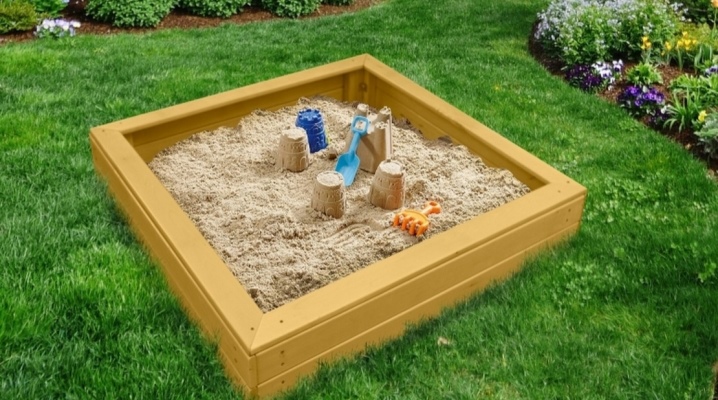
Any play area must have a sandbox. Thanks to such entertainment, children develop fine motor skills of hands, imagination, and even communication skills. After all, playing in the sandbox, building Easter cakes or castles, children actively communicate with each other.
And no matter how much time has passed, not a single gadget can replace such "live" communication in the sandbox, where every kid gets a sea of emotions and delight from the result he sees. And, by the way, we are used to seeing sandboxes mainly only in public playgrounds, but you can install it in the courtyard of a private house or summer cottage, even in an apartment. It remains only to understand how much sand needs to be poured there.
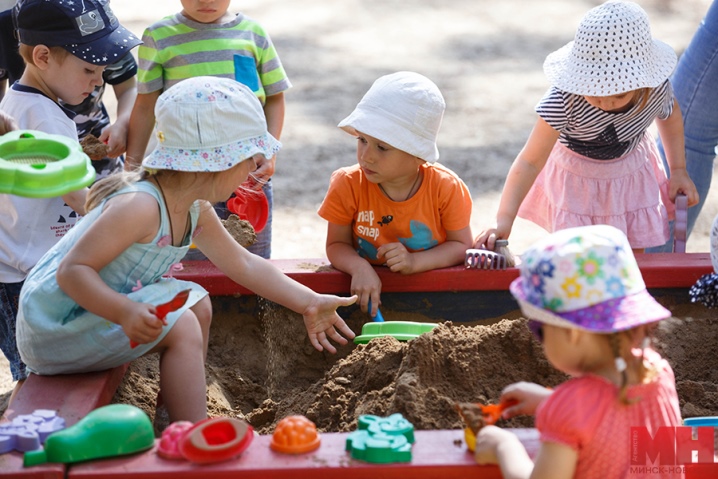
What affects volume?
Sandboxes are made in different shapes, and they differ in size. For a room, for example, a sandbox-table is perfect, you can also get plastic mini-pools. These structures will not take up much space, are easy to carry, and the child will enjoy no less than large sandboxes in the yard.
To choose a model for the house, you need to focus on how much space you can give for this installation in the room. But for the street, the number of children who will play in the sandbox is taken into account.
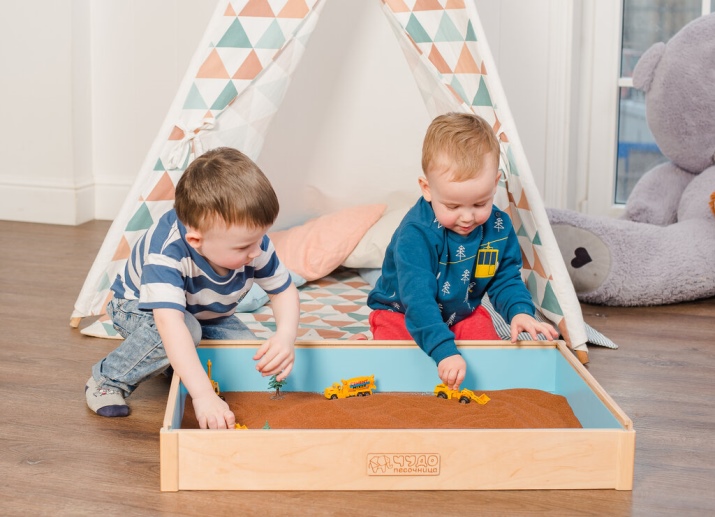
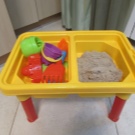
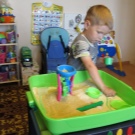

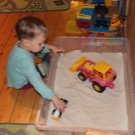

Usually, the following calculations are taken into account when determining the volume: one child must be at least 1.44 meters. That is, the sandbox for one kid should be 1.2 meters wide and long. Next, multiply by the estimated number of children that should fit in it. In height, these structures usually do not exceed 0.3 meters. There are modular sandboxes: their size and shape can be changed with the help of additional elements.
Whatever the shape and size of the sandbox, you need to carefully consider its location and filling with sand. The location must be in a safe and shady location. By the way, modern standard sandboxes have roofs.

But as for filling it with sand, you need to know that you cannot completely fill the sandbox with sand - so it will be inconvenient for children to play in it, as, indeed, with a small amount of it.
The best option is to fill the structure 2/3 of its height.
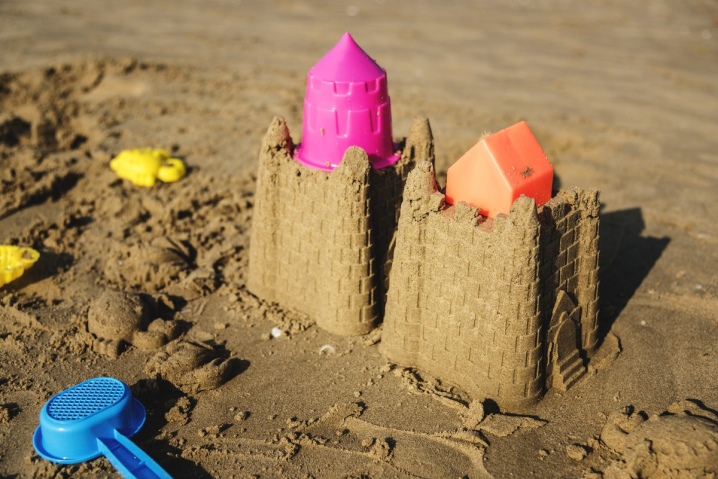
How many different types of sand do you need for a sandbox?
To understand how much sand should be poured into a children's sandbox in the country, you need to calculate the volume. Everyone knows how to do this - this is school material: multiply the width, length of the sandbox and the height of the sand layer, or calculate the area of the structure, and multiply the result by the desired fill height.
We turn the resulting cubes into kilograms. But for this you need to know the specific gravity of sand (bulk density), for each species this indicator varies within 400-1800 kg / cubic meter. Hence the different amount of sand that may be required, for example, for identical sandboxes. The specific gravity or bulk density of the sand is indicated on the bags.
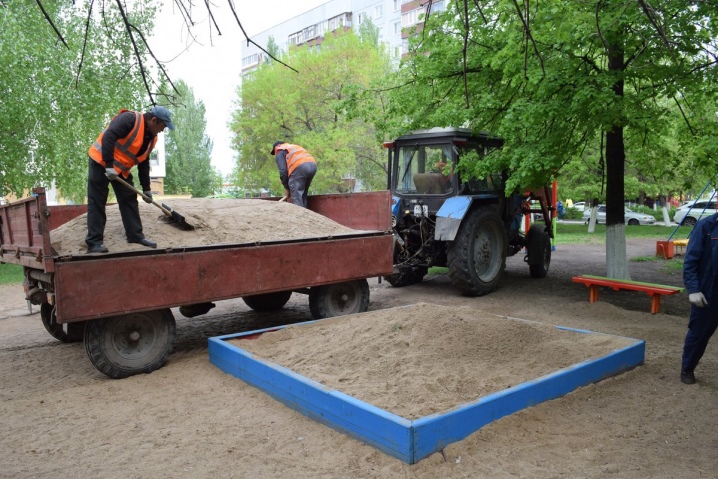
If you decide to purchase sand directly from the quarry, then you will have to sift it, well, there the specialists are also obliged to give you answers to your questions. It is also necessary to pay attention to the age group of those for whom the sandbox is being made.
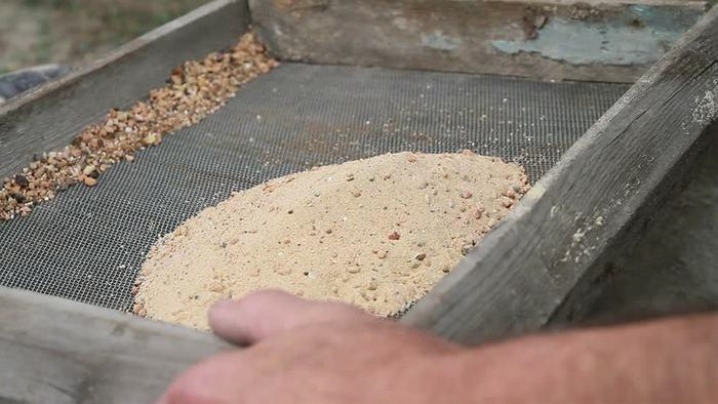
Sandbox sand is usually divided into two types.
- Fine-grained (fine-grained) belongs to the category of fines with a grain size of 0.05 to 0.5 mm. This material is malleable when sculpted, it is gentle and perfect for small children.
- Medium and coarse grained belongs to the category of coarse fraction with a grain size of sand from 0.5 to 2 mm.This material is suitable for outdoor games for older children.
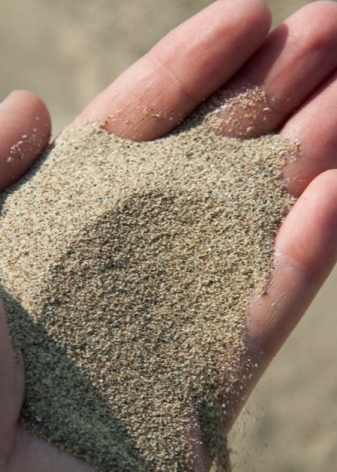
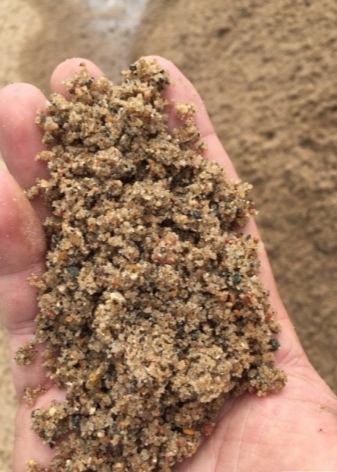
So, in the fine-grained, the density is higher than in the category of the coarse fraction (accordingly, it will be needed more to fill the same structures than the coarse-grained). This indicator is even higher in quartz sand.
Usually sandboxes are covered with calcined quartz sand or sifted river sand.
There are more grains of sand in quartz sand, it is more expensive than river sand and is red, blue, purple. But this type of sand does not hold its shape, even if it gets wet.
How to calculate the quantity?
When calculating the amount of sand, it is important to understand that the volume is not equal to the tonnage. For example, one cubic meter can contain from 400 kg to 1.8 tons of sand. So, let's reveal the volume of the sandbox for one child (1.2x1.2). The area is 1.44 m, this indicator is multiplied by the filling depth (not to be confused with the total height, the filling depth is 2/3 of the height), for example, by 0.3 meters (30 cm), and we get a volume of 0.432 cubic meters. m.
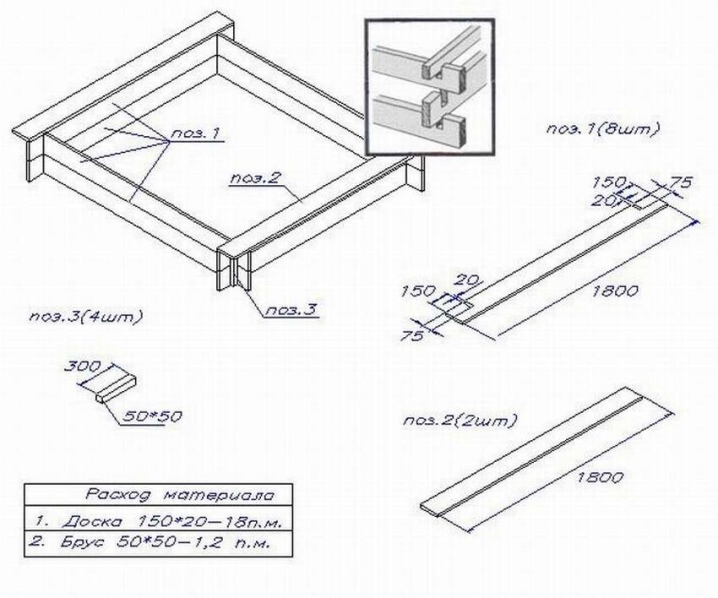
To convert cubes into kilograms, you need to know the specific gravity of the sand. With a density of 1500 kg per 1 cubic meter, we get a coefficient of 1.5 (respectively, in 1700 kg per 1 cubic meter - 1.7 and so on), multiply the coefficient by volume and get (1.5x0.432) 0.648 tons of sand or 648 kg.
This is exactly how much sand is needed to fill the sandbox for one child, respectively, for two or three children, this amount will double and triple. To calculate the number of bags, divide the resulting kilograms by the figure that is indicated on one bag (usually bags are packed in 40-60 kg), and understand how many bags you need to buy.
To learn how to make a sandbox with your own hands, see the video.













The comment was sent successfully.